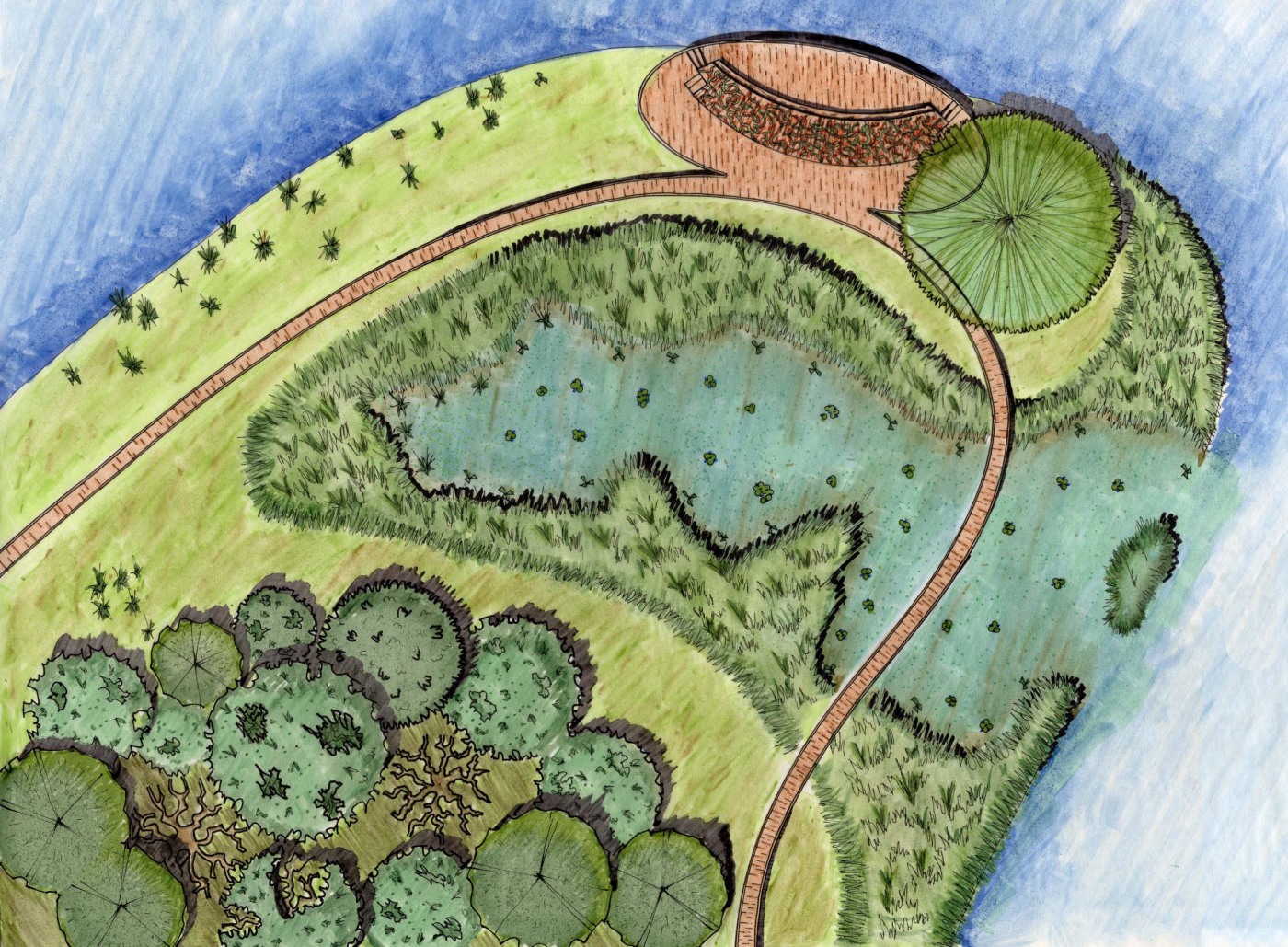Forum Replies Created
-
AuthorPosts
-
February 25, 2014 at 6:45 pm #153078
 Phil MooreheadParticipant
Phil MooreheadParticipantMaybe if you did something like this? I don’t know how an interface with a different alloy would affect the cathodic protection of the Cor-Ten, or vice versa (or if this kills your motif), but it’s a thought.
 January 23, 2014 at 5:39 pm #153293
January 23, 2014 at 5:39 pm #153293 Phil MooreheadParticipantJanuary 19, 2014 at 12:15 am #153299
Phil MooreheadParticipantJanuary 19, 2014 at 12:15 am #153299 Phil MooreheadParticipant
Phil MooreheadParticipantI’m all about this concept. I did a project in school that incorporated a skatepark into the campus of a corporation I invented. The company was a clothing/pads/accessories manufacturer, and the skatepark was located in a central courtyard and acted as their proving ground.
There were different means of circulation for the employees and skaters (with some overlap); the skate park was sunken below the grade of the courtyard (with the exception of half and quarter-pipes) and there was a pedestrian bridge that crossed over it and could also act as an observation deck. It would also be visible from the surrounding buildings where the clothing was designed and manufactured.
To discourage the benches meant to be sat on by the employees on break from being commandeered by the skaters, they were made in materials, forms, and dimensions that made them unappealing to skaters as skateable objects, but usable as furniture (I’ve attached some images from said project).
But enough about that. Looking at your image, it seems like you do a good job of making the skaters physically, but not visually, isolated from passers-by… with the exception of the shelter area. If those picnic tables aren’t bolted down, they’re going into the skatepark. If they are bolted down, they’re going to be skated where they sit. If that’s meant to be a neutral zone, I would suggest both bolting them down and surrounding them with some sort of barrier, and making sure the area enclosed is too small to get up to speed in. That being said, it wouldn’t be a bad idea to have movable obstacles such as picnic tables, benches, boxes, and rails, etc…
I would also point out that the plants in the center of the faux-bench/planter are not likely to survive. A properly executed blunt or board slide on the back of the “bench” would take out the front of the border, and everything else is susceptible to somebody bailing into them. Also, these plants probably need irrigation, and sprinkler irrigation and concrete skateparks don’t mix. Maybe if you had drip irrigation and the plants/trees behind (again) some sort of barrier.
To make a more general comment, I don’t think that integrating skatepark design into landscape architecture necessarily means putting plants in a skate park (not that it couldn’t or shouldn’t be done, and not to assume that was your implication). I personally consider skatepark design to be a specialization within landscape architecture, not a distinct discipline. Either way, what we’re talking about is designing a space meant to perform a function.
In closing, this looks like a decent park with several good lines and a nice counter-clockwise flow, but I do feel like it would be nice if that entire lower left-hand edge were a quarter-pipe, and maybe there were another quarter pipe or larger roll-in at the upper right corner.
December 26, 2013 at 8:00 pm #153474 Phil MooreheadParticipant
Phil MooreheadParticipantNumber 8? I always thought it was an upward facing infinity symbol, as in; “Land to infinity and beyond!”…lounge. (Sorry. I was wondering the same thing the other day, and I have no idea)
December 4, 2013 at 6:54 pm #153594 Phil MooreheadParticipant
Phil MooreheadParticipantI was unaware of this function, but it appears to achieve the same end as using “ctrl+shift+c”, and specifying 0,0,0, (origin) as the basepoint, then pasting with the origin in the new drawing. I suppose that probably came up on the forum…
August 30, 2013 at 5:55 pm #154261 Phil MooreheadParticipant
Phil MooreheadParticipantThe first thing that came to mind was a series of terraced rice paddies (substitute sedges and rushes). If this were somehow visually accessible, it might be worthwile to recreate that aesthetic. Here’s a pretty entertaining animation: http://www.pbs.org/wgbh/nova/ancient/rice-paddy.html
August 16, 2013 at 6:22 pm #154348 Phil MooreheadParticipant
Phil MooreheadParticipantRainbow Pillar Serviceberry.
February 7, 2013 at 7:47 pm #155572 Phil MooreheadParticipant
Phil MooreheadParticipantJoshua Trees?
December 18, 2012 at 6:44 pm #155870 Phil MooreheadParticipant
Phil MooreheadParticipantIf it’s a front-load garage (or doesn’t have a “court”), maybe you can get away with tire strips to direct and properly support vehicular traffic, then use your fragments to loosely define the outer boundaries of the driveway and support pedestrian traffic (making sure at least some of your fragments are large enough (2-3′) to act as stepping stones). Cars and trucks on paved strips, pedestrians on the fragments, and plants in the leftover spaces. Without knowing details like what type/depth of base you’re using and whether or not you plan on adding soil and how you’d try to keep it there, it’s hard to say what might happen with plants. Try some of these: http://www.stepables.com/1/plants.html
What sort of neighborhood (if any) is the setting for this project? It’s not going to be easy to make this look good, especially in a suburb of cookie-cutter homes and lots, but I do think it’s possible…
December 5, 2012 at 5:56 pm #155994 Phil MooreheadParticipant
Phil MooreheadParticipantGet your BLA and a minor in GIS, if possible.
December 3, 2012 at 6:04 pm #156018 Phil MooreheadParticipant
Phil MooreheadParticipantI can also vouch for OSU, at least during my time there. My graphics classes were taught by Yumin Li, and I had Norman Booth for a studio entitled “Human Factors in Design” (Prof. Booth was capable of offering advice on representation topics from hand-drawn graphics and clay models to file management for InDesign documents). There were, of course, other highly competent professors, lecturers, guest professionals, and graduate students to offer advice and demonstrations, as well.
I do think having some professional experience is key to appreciating why hand-drawn representation is critical. While drafting a plan in AutoCAD can certainly be more efficient and effective than hand drafting in some (perhaps most) instances, it’s the the sketches, sections, elevations, and axon’s of the design process leading up to a final plan where hand drawn graphics are indispensable. You could spend days in AutoCAD drafting a detailed section of a complicated multi-level intervention of some kind, only to discover a design flaw that you could have seen with a twenty-minute hand-drawn section.
CAD = good for final documentation
Hand-drawn = good for design
October 23, 2012 at 1:53 pm #156204 Phil MooreheadParticipant
Phil MooreheadParticipantPerhaps you can propose putting a Japanese Maple in a large decorative pot? That will give you a couple extra feet of overhead clearance, keep the tree artificially small, and you’ll know exactly where the roots are. I would also suggest something with an upright habit, like the ‘Sango-Kaku’.
A tree in this space is essentially containerized anyway, you might as well capitalize on it.
October 22, 2012 at 6:17 pm #161503 Phil MooreheadParticipant
Phil MooreheadParticipantAlso, whether or not to include cookie monster in our renderings is a call each of us has to make on our own.
October 22, 2012 at 6:02 pm #161504 Phil MooreheadParticipant
Phil MooreheadParticipant Here’s an example of something I did in school. Use breaks in mono-cultures to drop shadows and show height. Fields of grass reveal their stalks when they are blown sideways by the wind, and the wind can create eddies of swirling patterns which can be represented in plan. Within a larger monotonous expanse, you can “stipple” with simple plants symbols, and/or splashes of color to represent flowering plants. I also find color blending useful in creating variety.
Here’s an example of something I did in school. Use breaks in mono-cultures to drop shadows and show height. Fields of grass reveal their stalks when they are blown sideways by the wind, and the wind can create eddies of swirling patterns which can be represented in plan. Within a larger monotonous expanse, you can “stipple” with simple plants symbols, and/or splashes of color to represent flowering plants. I also find color blending useful in creating variety.You probably shouldn’t follow my example on the trees, though… I wasn’t extremely happy with how they came out. Which makes a great segue to another tip: practice and experiment with different methods.
September 19, 2012 at 5:45 pm #156355 Phil MooreheadParticipant
Phil MooreheadParticipantAre you importing CAD drawings or starting from scratch?
-
AuthorPosts

